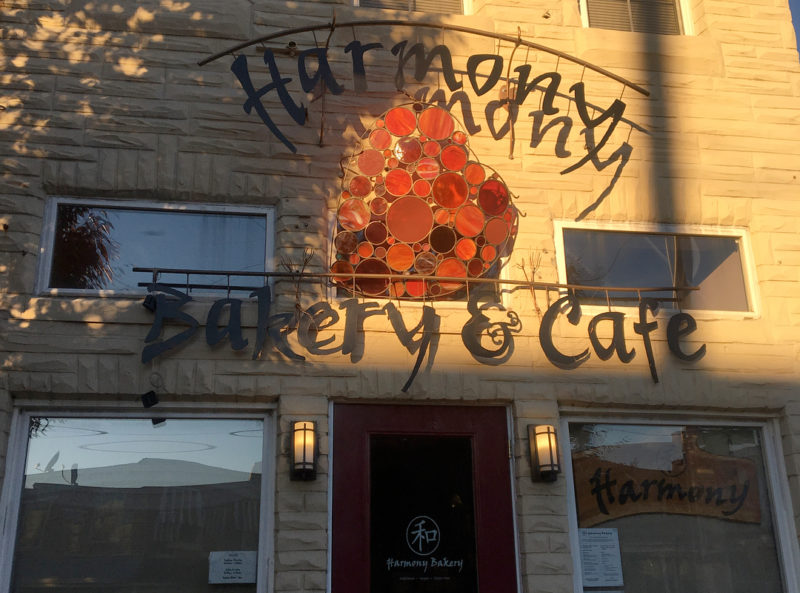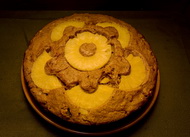

Wunderbar Coffee and Crepes and the Two Fraus Bakery, also both in Harmony, serve German-themed refreshments. Photo: Kathleen Walls Interior of The Harmony Inn. The Harmony Inn is now a tavern and restaurant where you can get traditional German dishes like spaetzle, strudel, and authentic German pretzels. They also carry on a German brewing tradition at North Country Brewing Company.

At one time the attic was used to quarantine children who had scarlet fever. Over the years, it passed through many hands.

When he fell upon hard times, he sold to a Ziegler relative who operated it as a rooming house. The Harmony Inn, right on the square, was built as the home of Austin Pierce, a railroad president and businessman, in 1856. In Harmony, and Butler County, where it sits, you can find authentic German food often in buildings that date back to the Harmonists or Mennonite period. Photo: Kathleen Walls Inside Mennonite Meeting Hall. Many of them bear the name “Ziegler.” Mennonite Meeting Hall. The Mennonite Cemetery is located behind their simple meeting hall. Men would have entered from the front door and women the one on the side. It is believed to be the oldest meetinghouse west of the Alleghenies. The Mennonite Meeting House remains much as it was when originally built in 1825. The Mennonites also built a wall around the Harmonists cemetery and installed a stone gate weighing more than a ton that can be opened with one hand. It commemorates Johannes Rapp, George Rapp’s son, who died July 27, 1812. There are about 100 people buried in the Harmonist Cemetery but only one marker, which was placed there by the Mennonites. The Harmonists did not believe in tombstones but the Mennonites did. The other properties worth a visit are the Harmonists Cemetery and the Mennonite Meeting House and Cemetery. When you raise the handle to knock, her eyes open. It is a woman with closed eyes wearing a bonnet. The unusual doorknocker is of particular interest. A wooden cabinet stores dishes and utensils and baskets for storage hang from the ceiling.

There’s a low-poster double bed with a wooden cradle at its foot. The furnishings are simple but beautiful. The cabin contains all the necessities of life for a Mennonite in the early 1800s. The small cabin is well preserved with a huge stone fireplace to handle Western Pennsylvanian winters and a barrel-shaped wood heater that vented through the fireplace chimney. The Mennonites did not practice celibacy.Īnother key site is the 1819 one-room Ziegler Cabin, which showcases the Mennonite lifestyle. For example, there is a family tree of Ziegler descendants that starts with Abraham Ziegler and his 13 children. The museum also provides information on the Mennonite settlers. It has a large display of the tools the Harmonists needed to turn the virgin forest into a town, an exhibit that is a recreation of Rapp’s bedroom, as well as information about the Harmonists beliefs and religious practices. Historic Harmony, a nonprofit historical society and preservation group, owns eight properties that preserve the town’s history, but the Harmony Museum is the place to start your tour. Stone wall and gate at Harmonists Cemetery. The heritage of both groups still exists in Harmony. Several years later, in 1824, they moved back to Pennsylvania, and founded yet another town, before the society dissolved in 1906. The Harmonists moved first to Indiana Territory, where they built a new town, also called Harmony (now New Harmony, Indiana). The Harmonists created and lived in Harmony until 1814, when they sold the town, whose land was communally owned, to a Mennonite group headed by Abraham Ziegler. Each settler gave his earnings to Father Rapp who parceled it out according to each person’s needs. Rapp taught that the “end time” was near and advocated celibacy and a communal form of living. Harmony, which is a National Historic Landmark District, was founded in 1804 as a religious commune by George Rapp, a German Lutheran Separatist, who combined the philosophy and writing of the early Christians and Karl Marx. A half hour’s drive north of Pittsburgh, the tiny Western Pennsylvania town of Harmony, with a population of fewer than 1,000 people, has an unusual history that makes for a fascinating visit.


 0 kommentar(er)
0 kommentar(er)
